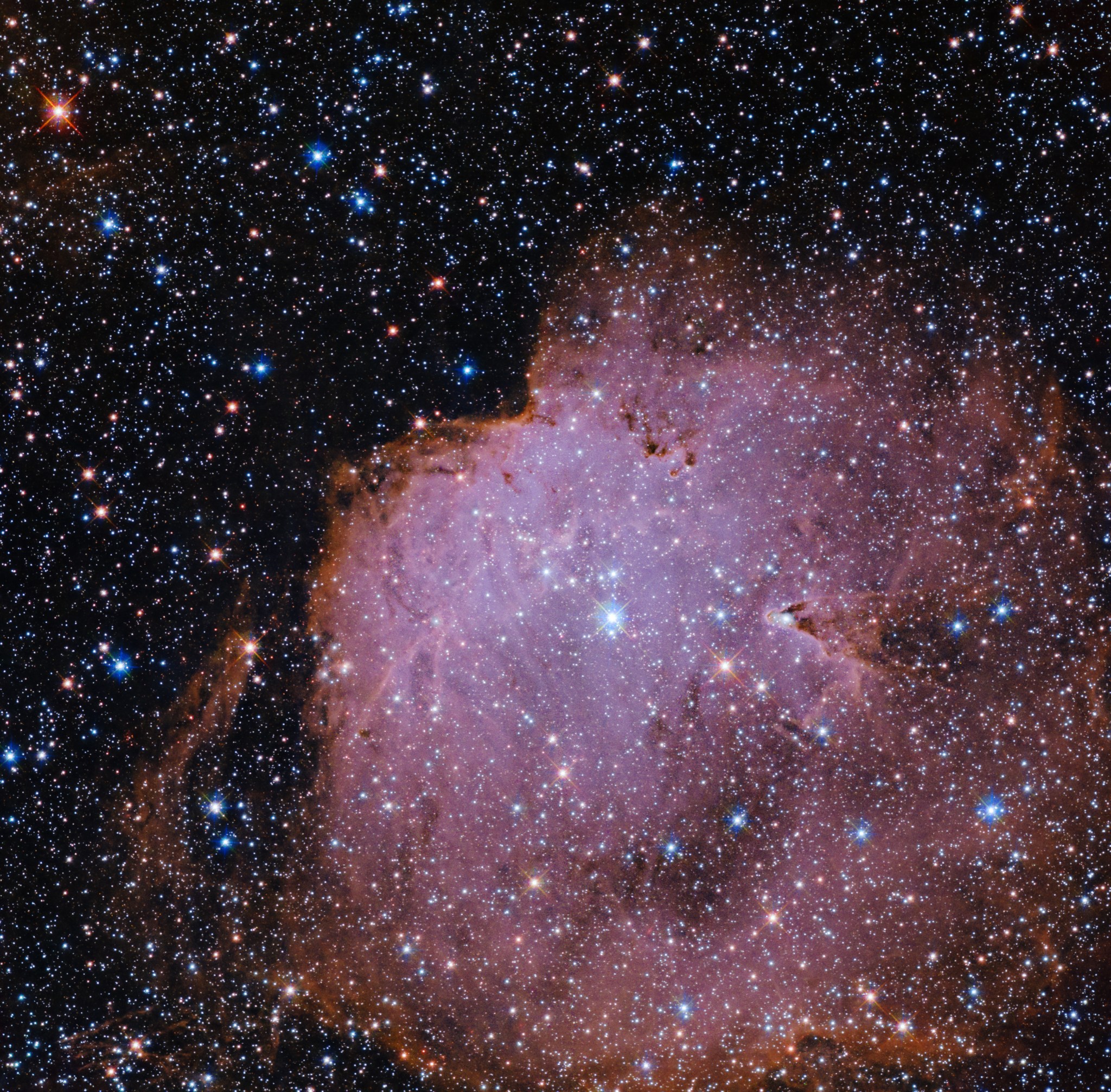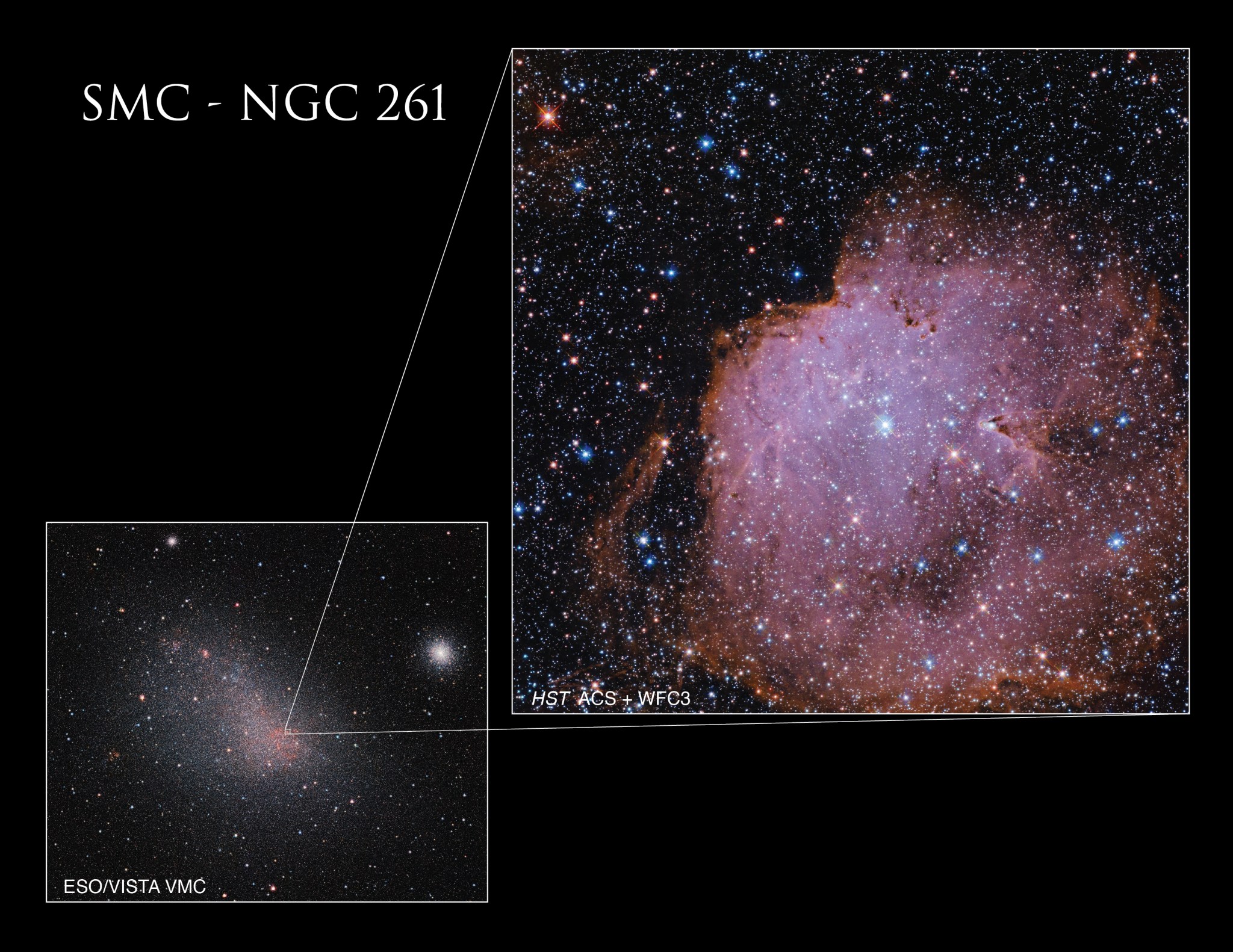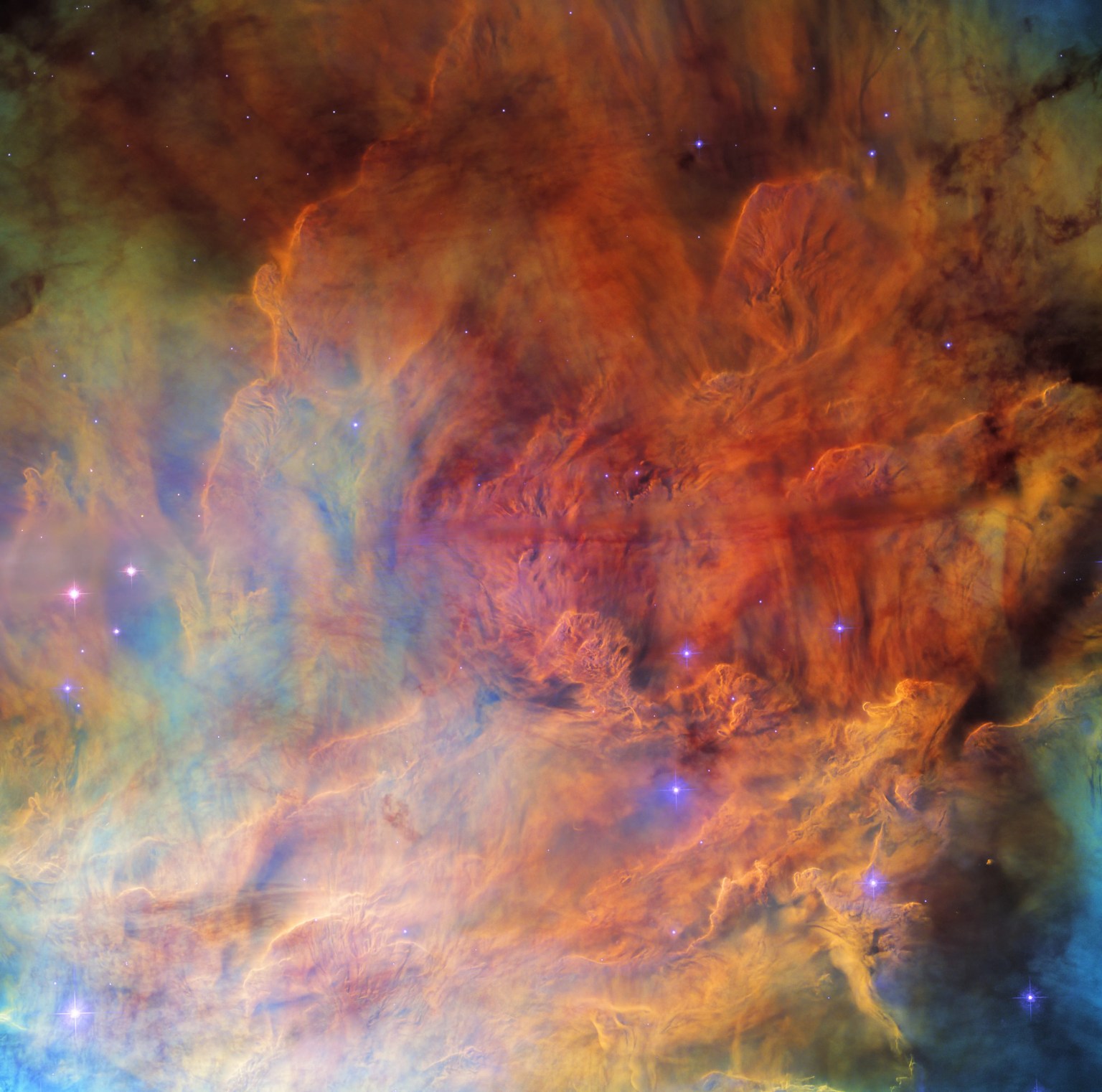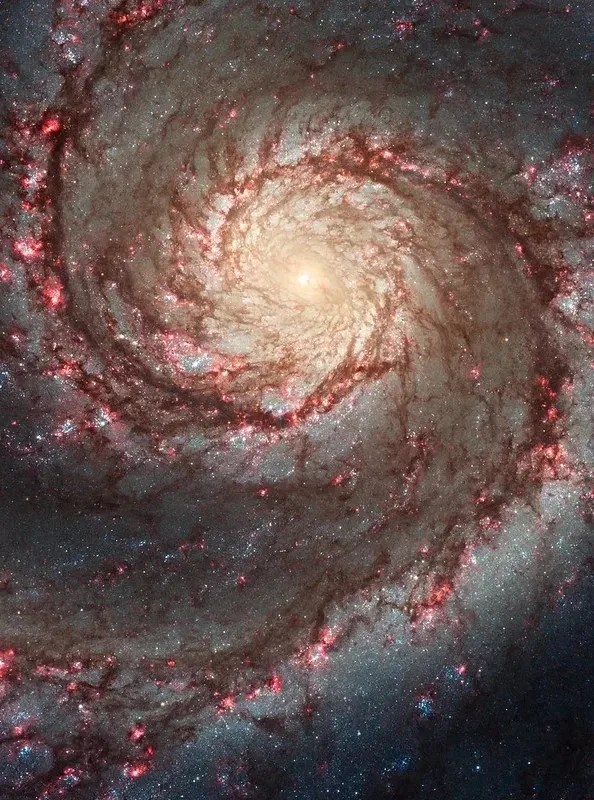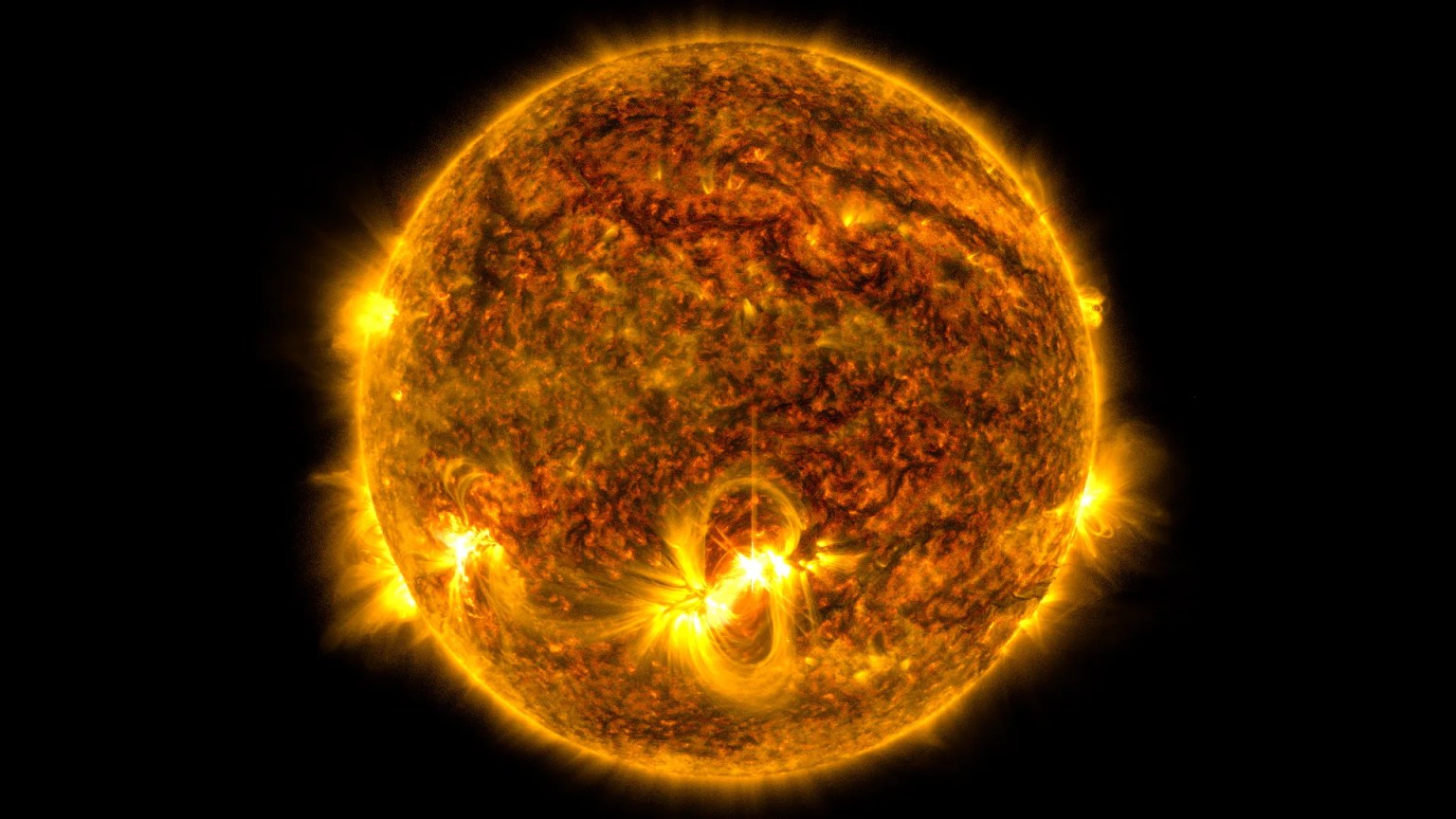NGC 261 blooms a brilliant ruby red against a myriad of stars in this new image from NASA’s Hubble Space Telescope. Discovered on Sept. 5, 1826 by Scottish astronomer James Dunlop, this nebula is located in one of the Milky Way’s closest galactic companions, the Small Magellanic Cloud (SMC). The ionized gas blazing from within this diffuse region marks NGC 261 as an emission nebula. It is home to numerous stars hot enough to irradiate surrounding hydrogen gas, causing the cloud to emit a pinkish-red glow.
Hubble turned its keen eye toward NGC 261 to investigate how efficiently stars form in molecular clouds, which are extremely dense and compact regions of gas and dust. These clouds often consist of large amounts of molecular hydrogen — cold areas where most stars form. However, measuring this raw fuel of star formation in stellar nurseries is a challenge because molecular hydrogen doesn’t radiate easily. Since it is difficult to detect, scientists instead trace other molecules present in the molecular clouds.
The SMC hosts a gas-rich environment of young stars along with trace amounts of carbon monoxide (CO), a chemical correlated with hydrogen and often used to identify the presence of such clouds. Using the Advanced Camera for Surveys (ACS) and Wide Field Camera 3 (WFC3), Hubble imaged these stars in the southwest portion of the SMC where NGC 261 resides. The combined power of ACS and WFC3 allowed scientists to closely examine the nebula’s star-forming properties through its CO content at optical and near-infrared wavelengths. This research helps astronomers better understand how stars form in our home galaxy and others in our galactic neighborhood.
Explore More
Media Contact:
Claire Andreoli
NASA's Goddard Space Flight Center, Greenbelt, MD
claire.andreoli@nasa.gov




























